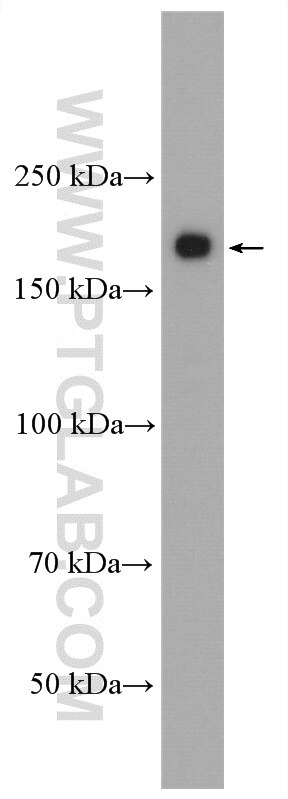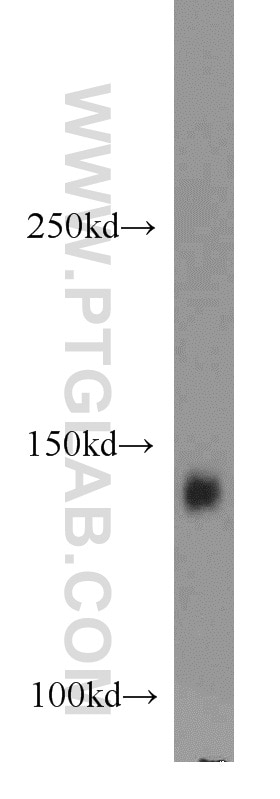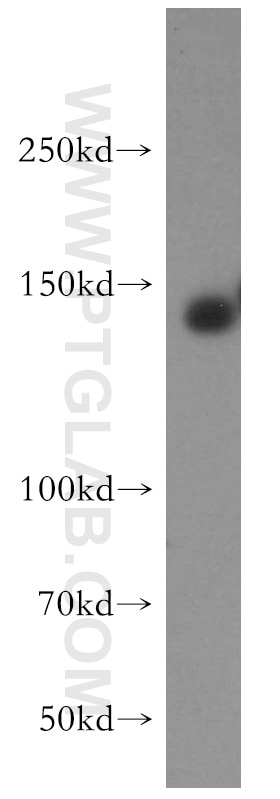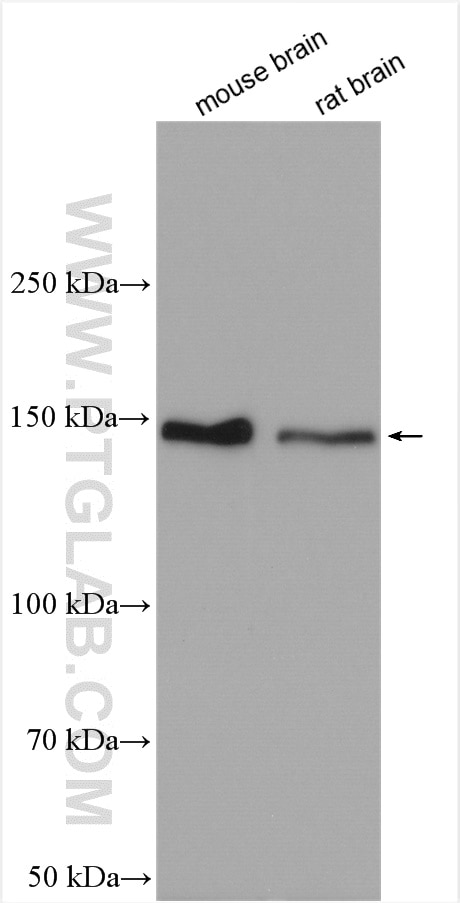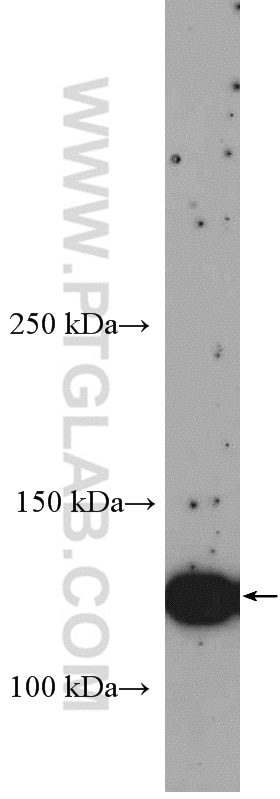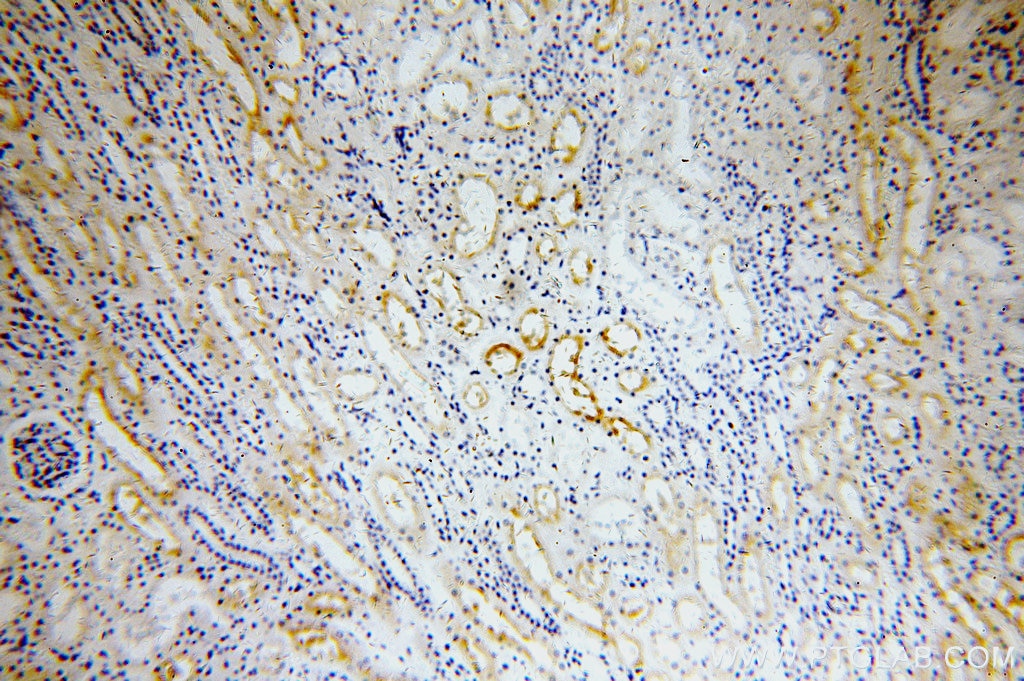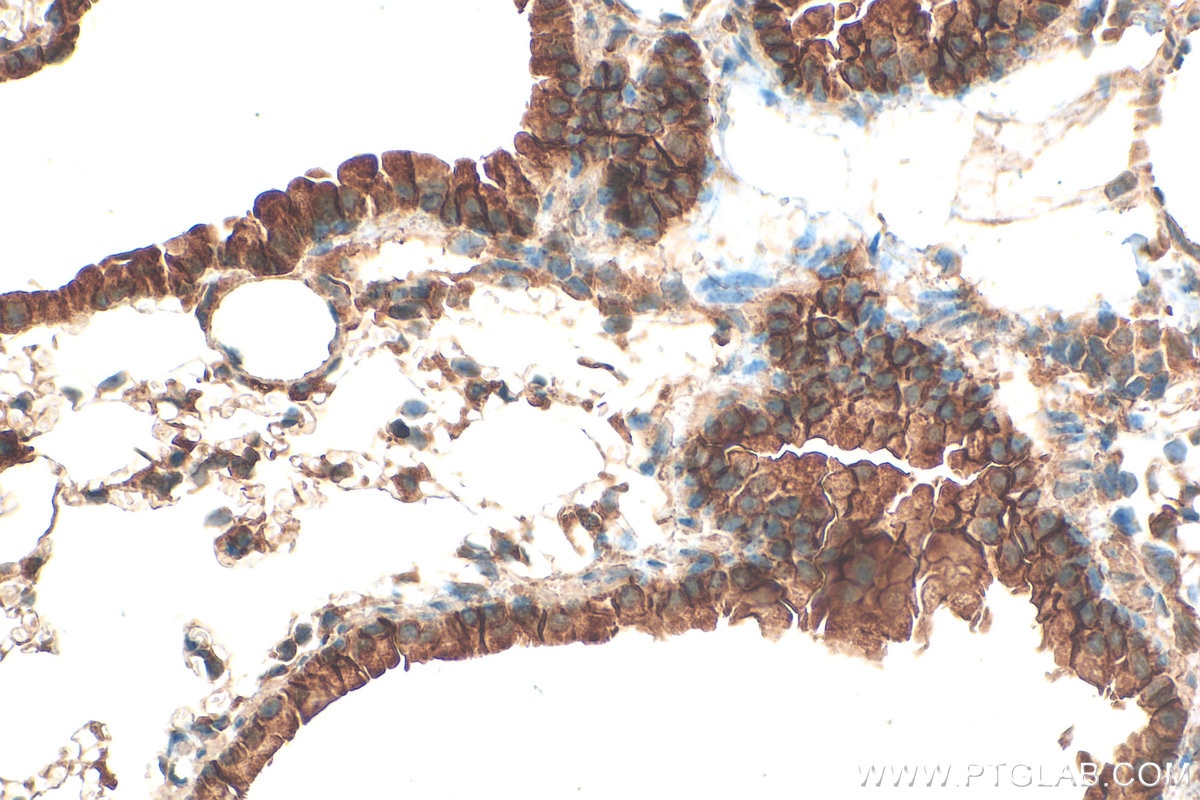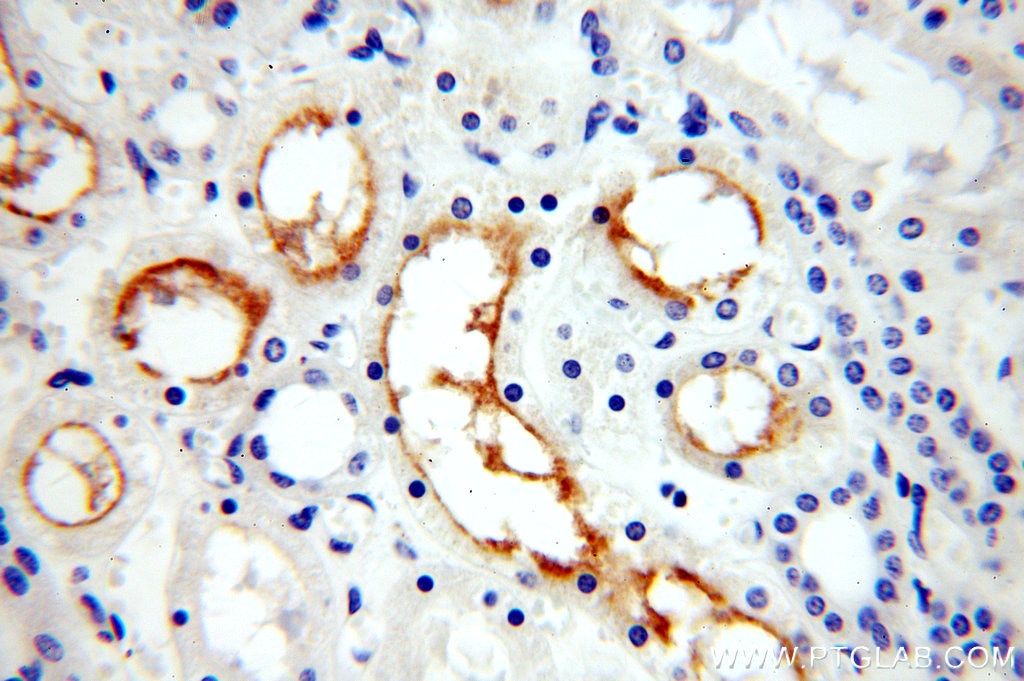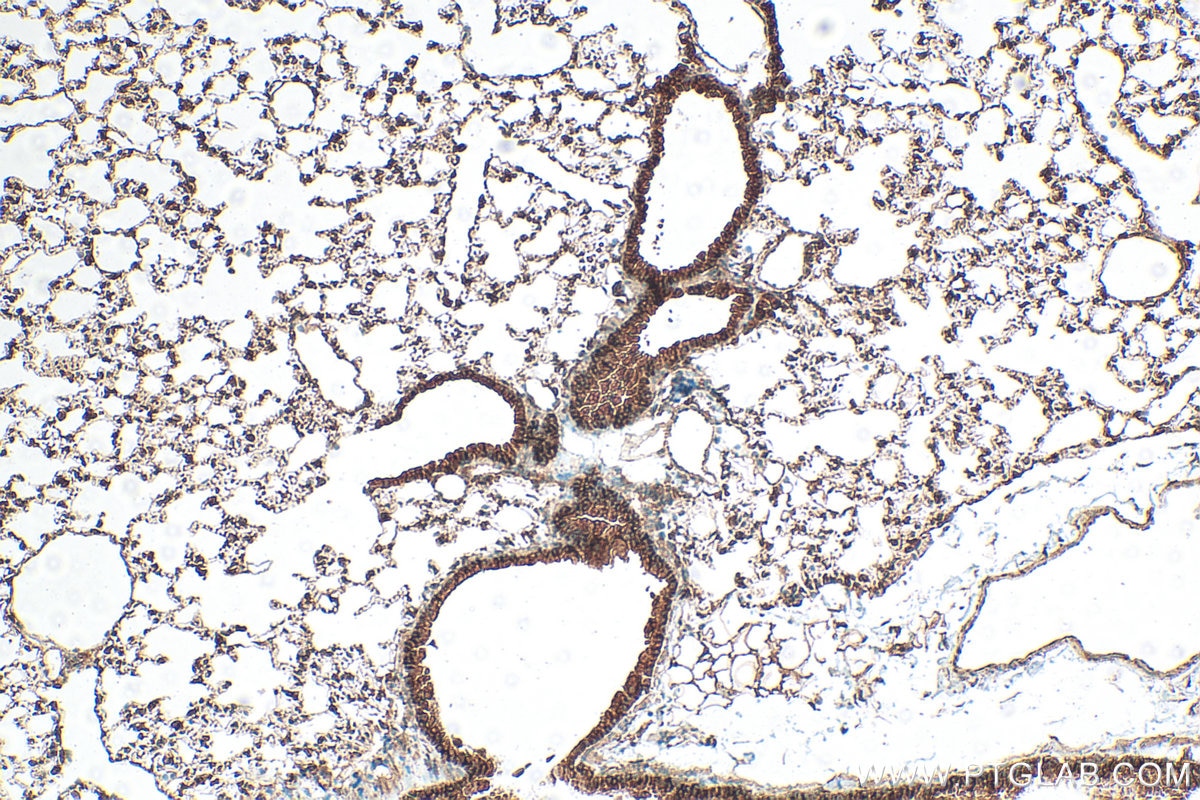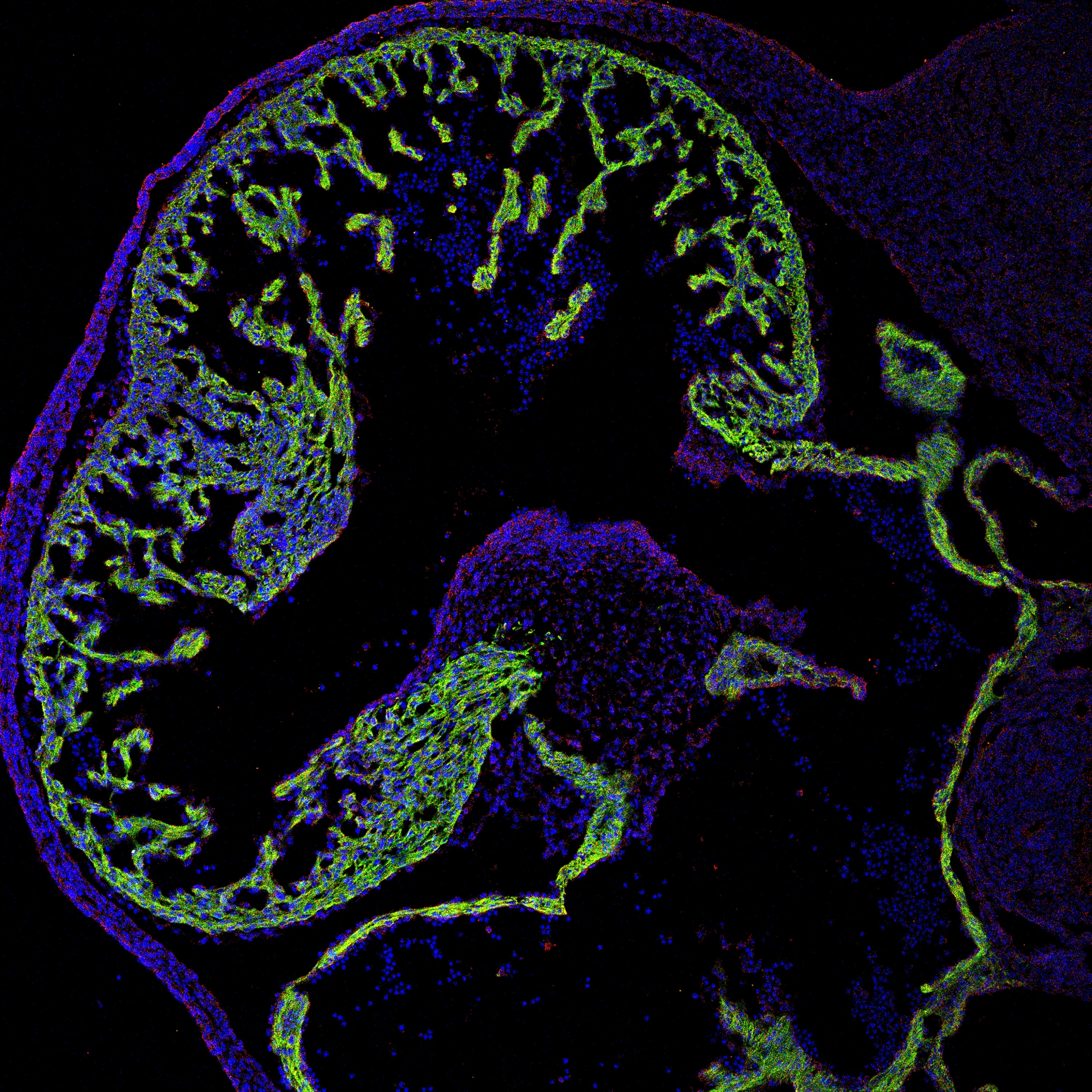ERBB4 Polyklonaler Antikörper
ERBB4 Polyklonal Antikörper für WB, IHC, ELISA
Wirt / Isotyp
Kaninchen / IgG
Getestete Reaktivität
human, Maus, Ratte und mehr (1)
Anwendung
WB, IHC, IF, ELISA
Konjugation
Unkonjugiert
Kat-Nr. : 19943-1-AP
Synonyme
Geprüfte Anwendungen
| Erfolgreiche Detektion in WB | Maushirngewebe, MCF-7-Zellen, Rattenhirngewebe |
| Erfolgreiche Detektion in IHC | Mauslungengewebe, humanes Nierengewebe Hinweis: Antigendemaskierung mit TE-Puffer pH 9,0 empfohlen. (*) Wahlweise kann die Antigendemaskierung auch mit Citratpuffer pH 6,0 erfolgen. |
Empfohlene Verdünnung
| Anwendung | Verdünnung |
|---|---|
| Western Blot (WB) | WB : 1:200-1:1000 |
| Immunhistochemie (IHC) | IHC : 1:50-1:500 |
| It is recommended that this reagent should be titrated in each testing system to obtain optimal results. | |
| Sample-dependent, check data in validation data gallery | |
Veröffentlichte Anwendungen
| WB | See 15 publications below |
| IHC | See 2 publications below |
| IF | See 2 publications below |
Produktinformation
19943-1-AP bindet in WB, IHC, IF, ELISA ERBB4 und zeigt Reaktivität mit human, Maus, Ratten
| Getestete Reaktivität | human, Maus, Ratte |
| In Publikationen genannte Reaktivität | human, Hausschwein, Maus, Ratte |
| Wirt / Isotyp | Kaninchen / IgG |
| Klonalität | Polyklonal |
| Typ | Antikörper |
| Immunogen | Peptid |
| Vollständiger Name | v-erb-a erythroblastic leukemia viral oncogene homolog 4 (avian) |
| Berechnetes Molekulargewicht | 147 kDa |
| Beobachtetes Molekulargewicht | 180 kDa, 147 kDa |
| GenBank-Zugangsnummer | NM_001042599 |
| Gene symbol | ERBB4 |
| Gene ID (NCBI) | 2066 |
| Konjugation | Unkonjugiert |
| Form | Liquid |
| Reinigungsmethode | Antigen-Affinitätsreinigung |
| Lagerungspuffer | PBS with 0.02% sodium azide and 50% glycerol |
| Lagerungsbedingungen | Bei -20°C lagern. Nach dem Versand ein Jahr lang stabil Aliquotieren ist bei -20oC Lagerung nicht notwendig. 20ul Größen enthalten 0,1% BSA. |
Hintergrundinformationen
ERBB4, also named p180erbB4 and HER4, belongs to the protein kinase superfamily, Tyr protein kinase family, and EGF receptor subfamily. ERBB4 specifically binds and it is activated by neuregulins, NRG-2, NRG-3, heparin-binding EGF-like growth factor, betacellulin, and NTAK. Interaction with these factors induces cell differentiation. ERBB4 is not activated by EGF, TGF-A, and amphiregulin. ERBB4 catalyzes the reaction: ATP + a [protein]-L-tyrosine = ADP + a [protein]-L-tyrosine phosphate. The antibody recognizes the C-term of ERBB4. Alternatively spliced variants that encode different protein isoforms with a calculated molecular weight of 144-147 kDa have been described. The apparent molecular weight of full-length ERBB4 is 150-200 kDa due to glycosylation and phosphorylation. Full-length ERBB4 can be cleaved into an 80-kDa ERBB4 intracellular fragment and a 120-kDa extracellular fragment (PMID: 11343971; 16251361).
Protokolle
| PRODUKTSPEZIFISCHE PROTOKOLLE | |
|---|---|
| WB protocol for ERBB4 antibody 19943-1-AP | Protokoll herunterladen |
| IHC protocol for ERBB4 antibody 19943-1-AP | Protokoll herunterladenl |
| STANDARD-PROTOKOLLE | |
|---|---|
| Klicken Sie hier, um unsere Standardprotokolle anzuzeigen |
Publikationen
| Species | Application | Title |
|---|---|---|
Adv Sci (Weinh) Neuregulin4 Acts on Hypothalamic ErBb4 to Excite Oxytocin Neurons and Preserve Metabolic Homeostasis | ||
J Neuroinflammation EGFR transactivation contributes to neuroinflammation in Streptococcus suis meningitis. | ||
Cell Mol Neurobiol Identifying Genes that Affect Differentiation of Human Neural Stem Cells and Myelination of Mature Oligodendrocytes | ||
DNA Cell Biol AK003290 Protects Myocardial Cells Against Apoptosis and Promotes Cardiac Function Recovery Via miR-539-3p/ErbB4 Axis in Ischemic-Reperfusion Injury. |
